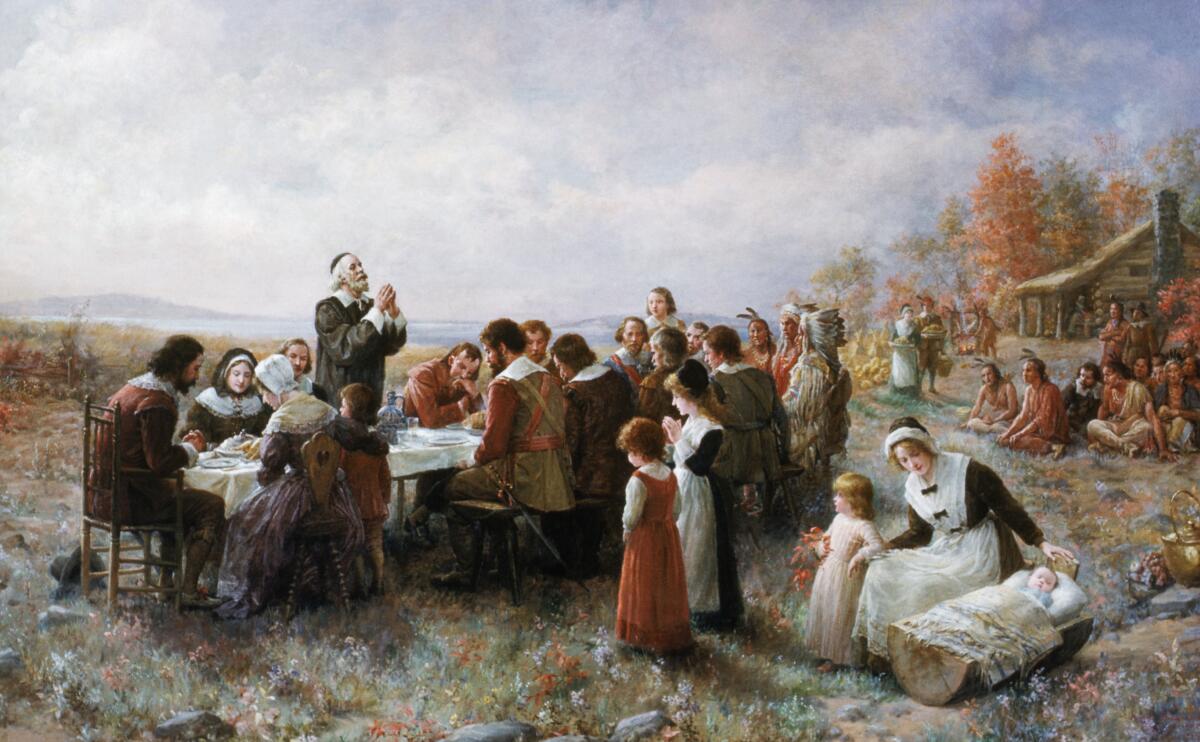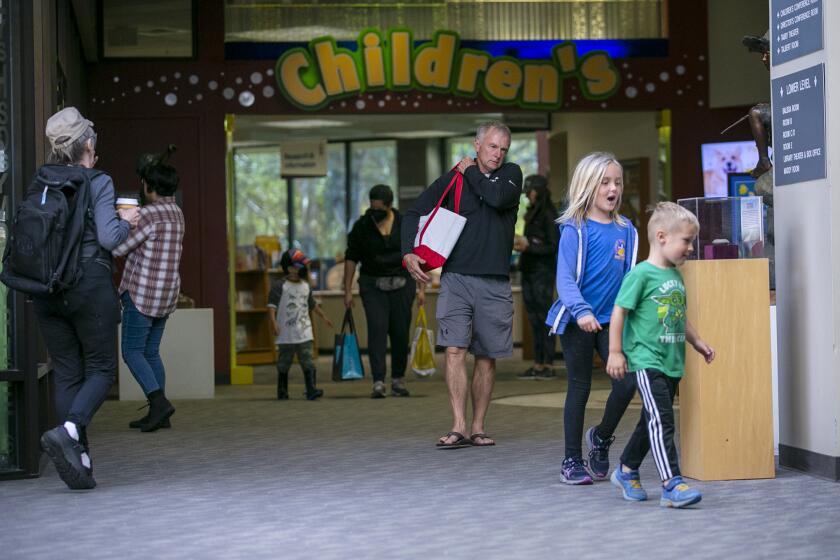Apodaca: Thanksgiving, a time for family and reflection on the true past

- Share via
I love Thanksgiving. A warm-hearted gathering of loved ones, piles of food and football. Few obligations aside from expressing gratitude and stuffing your face. Seriously, what’s not to like?
But Thanksgiving is also evolving, and that’s something we should recognize while we are giving thanks. Most of us are now aware that the true story of the holiday’s origins is a far cry from the manipulative fairy tale that was peddled for decades. That growing awareness is a positive development, and we should be grateful that the distortions and omissions are now more widely acknowledged.
In recent years, historians have made it clear that the tale of a three-day, feel-good feast in the fall of 1621, which ostensibly brought together peace-loving native peoples and scrappy Pilgrim settlers to give thanks for a bountiful harvest, is largely a work of fiction built on kernels of truth.
The real story differs in small ways (no turkey); significant ways (the Wampanoag tribe‘s alliance with the European migrants was about survival, not a quest for harmony), and catastrophic ways (the era of colonization and conquest was marked by stolen land, deadly disease, enslavement and massacres that devastated the indigenous population).
Yet, even though the broad strokes of this history are now largely understood, we still tend to gloss over many of the brutal details. Such as the fact that by the 1620s the Wampanoags had already experienced a century of often violent interactions with Europeans. Or that in the decades following 1621 the relationship between the Wampanoags and the colonists deteriorated as the Europeans forced their will upon the natives, culminating in one of the most horrific colonial-Indian wars on record.
Painting a different, more benign picture proved useful. President Abraham Lincoln declared Thanksgiving a national holiday in 1863 in hopes of promoting unity in a nation riven by civil war. It didn’t take long for the myth of Pilgrims and Native Americans feasting together as amicable equals to become incorporated into the holiday’s lore. It was a good story, told to enhance the narrative of Manifest Destiny.
The Huntington Beach City Council’s 4-3 vote to create a community oversight panel eyeing children’s books has discriminatory intentions, writes Daily Pilot columnist Patrice Apodaca.
And for generations, that was the story we taught school kids, as if it was a sacred part of our national identity, not to be examined more closely. We fetishized the holiday, holding school events in which students pretended to be either welcoming native people or grateful Pilgrims. They crafted headwear out of colored construction paper, and played out a simplistic drama of friendly hands reaching across the dinner table.
Many schools have now ditched that kitschy exercise in favor of more nuanced celebrations. But we still have a long way to go to provide a full accounting of the history surrounding the holiday, and even longer to go to make the histories of indigenous peoples from the precolonial era to the present a fundamental part of core educational curriculum.
We have only to consider the recently released film “Killers of the Flower Moon” to know that many stories have yet to be revealed to a broad audience. I haven’t seen the movie yet, but I read the book, which details the shocking, greed-fueled murders of members of the Osage Nation in 1920s Oklahoma.
When I finished reading the book, I wondered why I had never before heard about this chapter in our nation’s history. And I pondered the question of how many other important stories remain ignored by all except those who must live with their consequences.
I relate all this not because I think we should hang our heads in shame or because I have some deep desire to turn the holiday into a somber affair where we wallow in remorse and recrimination.
Rather, I believe that looking squarely at the truth about our tumultuous, complicated history will ultimately make us stronger — and better. We must own our history — all of it — and resist the urge to soften the edges, minimize the impact or outright ignore the darkest, bloodiest parts. It’s not about guilt but about responsibility to learn from the past in all its complexity and acknowledge the injustices that have been perpetrated.
We have nothing to lose by fully embracing our flawed history, but there is much to gain. This is how we grow. With the illumination shining brightly on the past, we can move forward with a deep understanding of where things can go wrong, an ability to think critically — yes, there’s that pesky term, “critical thinking” — and to reflect on how we can build a more vibrant, just and healthy future for all.
We can handle the truth. So, by the way, can kids. They can grasp complex topics far better than they are sometimes given credit for. We should trust them enough to teach them the facts, not some rose-colored fiction about how we got to where we are now that, sadly, some groups still advocate.
This Thanksgiving I plan to give thanks for my beautiful family and cherished friends, and for my happy, comfortable life, even as I readily acknowledge that the foundation my happiness was built upon wasn’t always noble or good. I admit to the contradiction. But I won’t accept a lie.
All the latest on Orange County from Orange County.
Get our free TimesOC newsletter.
You may occasionally receive promotional content from the Daily Pilot.







